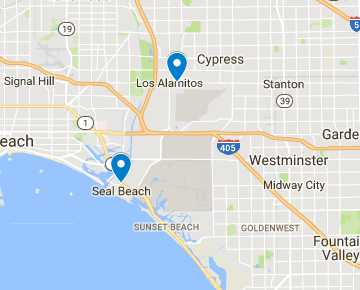Is Your Ankle Sprained or Strained?

Understanding the differences between a strain and a sprain can put you on the proper path to recovery.
Ankle sprains and strains vary in severity, but there’s one thing they all have in common — they make day-to-day activities a whole lot harder. Knowing when you’re experiencing a strain or sprain can be tricky, but understanding the nuances between the two can help you heal more quickly, safely, and effectively.
Strained vs. Sprained
Many people use “strain” and “sprain” interchangeably because the injuries can be very similar. Both are caused by overstretching or tearing of fibrous connective tissues, result in swelling and reduced flexibility, and are often occur because of significant slips, heavy lifting, and athletic injuries. Ankles, knees, feet, legs, and backs are all susceptible to strains and sprains.The key difference lies in the type of damaged soft tissue.
- Sprains: Overstretched or torn ligaments, the sturdy tissue that connects bone to bone or cartilage.
- Strains: Wear and tear to muscles or tendons, the tissue that connects bones to muscles. A strain can result from one particular accident or develop over time with continued use of a particular muscle.
So, how can you tell if you’re experiencing a strain or a sprain? While both come with a slew of side effects, including swelling, persistent pain, and reduced range of motion, keep an eye out for muscle spasms or cramping; this is usually an indication of a strain. If you hear a “pop” at the time of injury or notice extensive bruising, it’s likely you have a sprain on your hands.
Common Causes of Ankle Sprains and Strains
Approximately 1 million ankle injuries are diagnosed each year, according to Massachusetts General Hospital. Some of the most common causes and risk factors include:
- Sports: Some sports are more likely to cause damage than others. Those that require lots of jumping, like basketball and volleyball, put athletes at greater risk for foot and ankle sprains, whereas sports that involve extensive gripping, like gymnastics and rowing, or quick starts, such as track exercises, can lead to strains.
- Poor Fitness Practices: Worn-out athletic sneakers not only inhibit your performance, they also put your feet and ankles at risk. Regularly update your footwear to ensure you’re getting maximum support. It’s also important to partake in pre-workout warmups and post-workout cooldowns. This will give your joints the chance to stretch and strengthen.
- Inclement weather: Icy sidewalks and slippery stairs put you at risk for unexpected falls, which can lead to ankle and foot injuries.
How Do I Treat an Ankle Injury?
Treatment for both ankle sprains and strains depends on the severity of the injury. In mild cases, when the tendons or ligaments are stretched and slightly torn, rest, ice, compression, and elevation (RICE) are critical. Here’s how to ensure you’re properly following the RICE recovery technique:
- Rest: Keep pressure off your ankle for two to seven days to allow the tissue to heal.
- Ice: Ice can help reduce inflammation, which slows the healing process and causes more pain. Wrap an ice pack in a thin towel (never apply it directly to the skin) and place on your ankle in 20-minute increments.
- Compression: If used correctly, ankle wraps can drastically help alleviate swelling associated with sprains and strains
- Elevation: Propping your ankle on a couple of pillows is a great way to both minimize swelling and ensure you’re keeping the weight off.
While these practices can help you heal your ankle sprain or strain, they are not meant to repair more significant injuries. If you’re experiencing extreme bruising, severe pain, tenderness when touched, and consistent swelling, there’s a chance you’re suffering from a complete tear or broken ankle.
Contact the specialists at Alamitos Seal Beach Podiatry Group immediately to make an appointment and put your ankle on the path to recovery.





